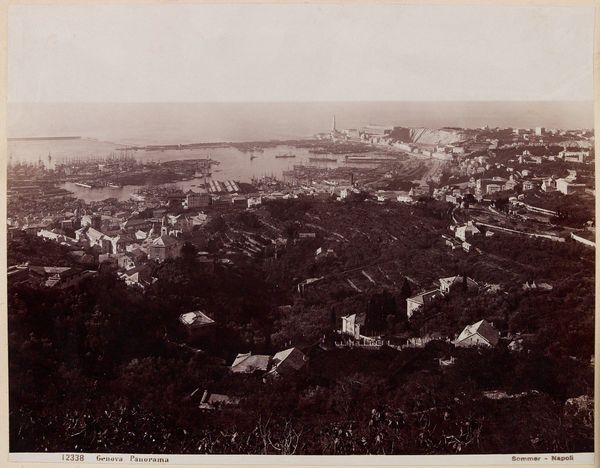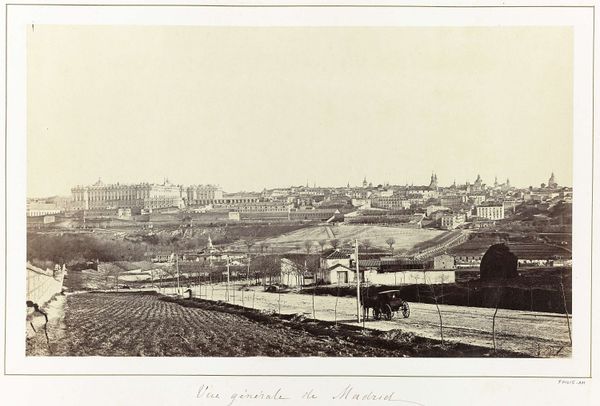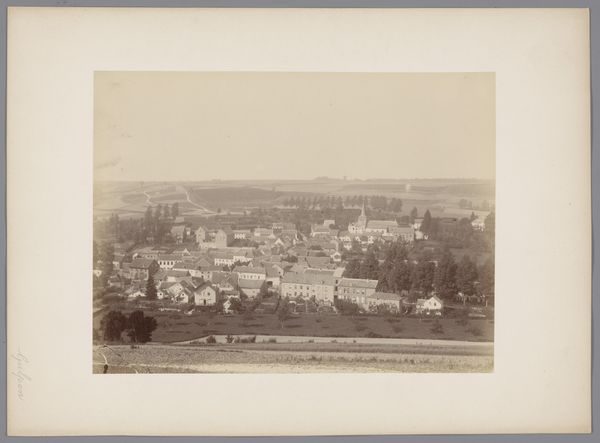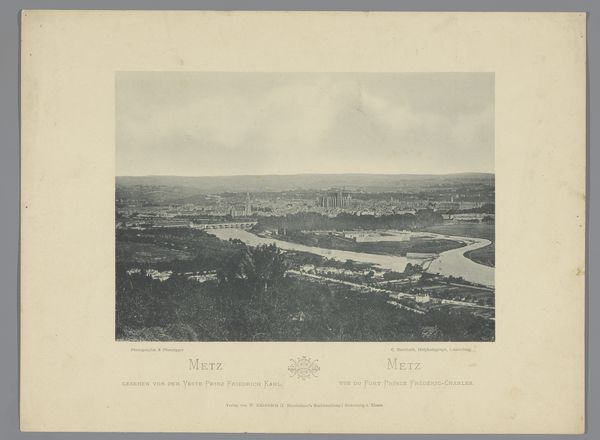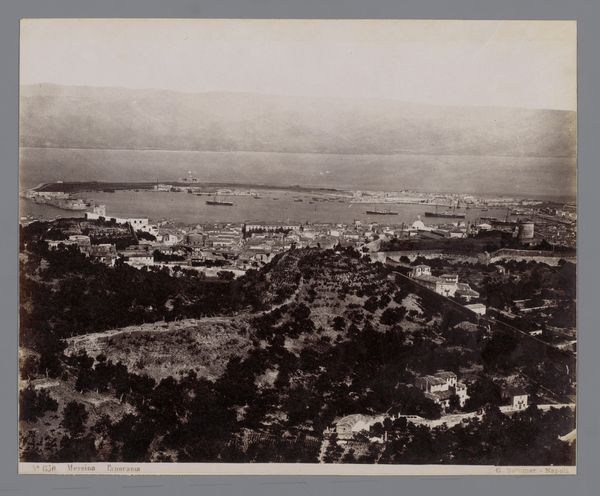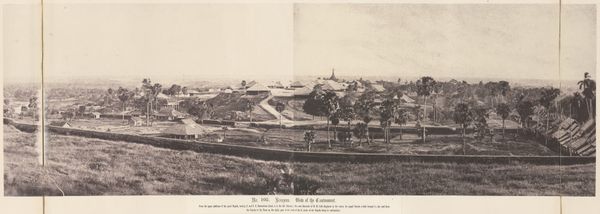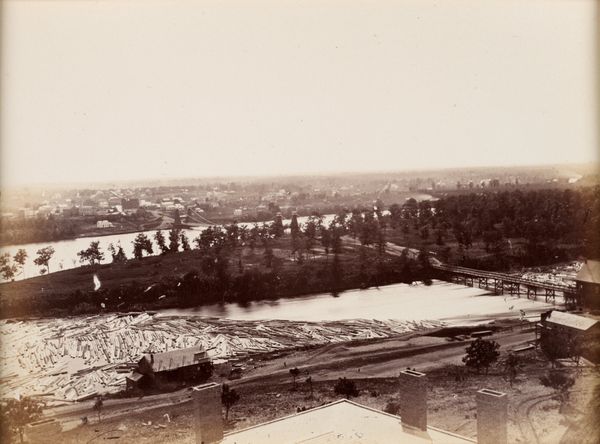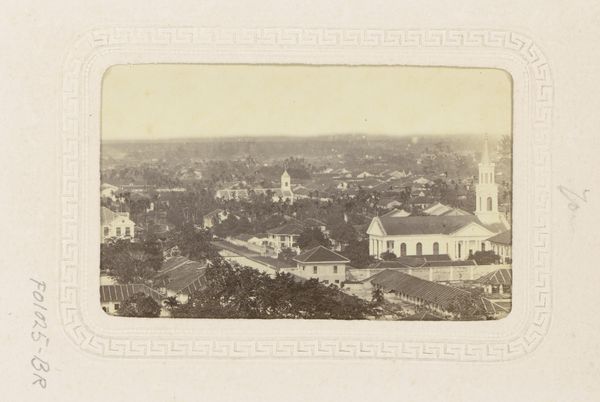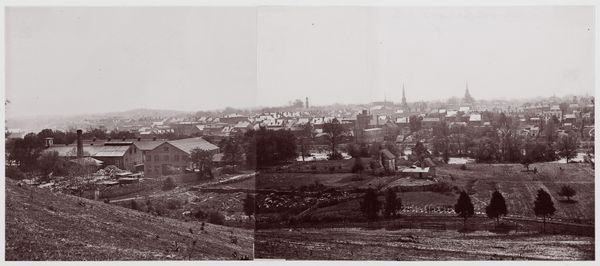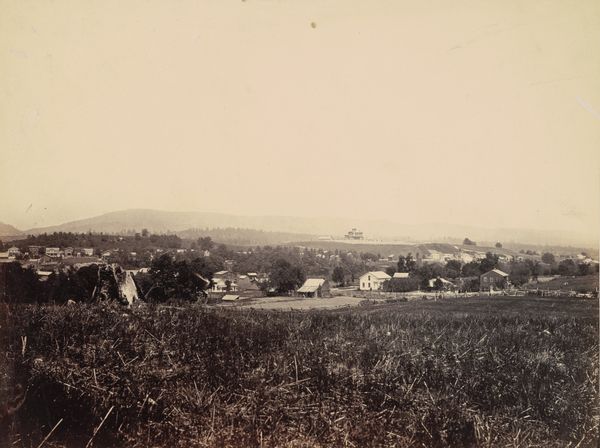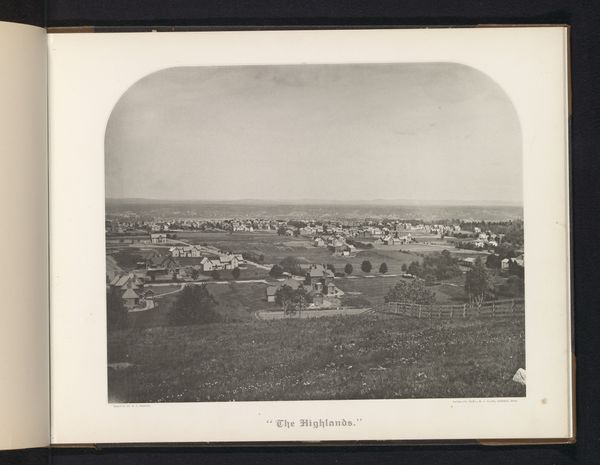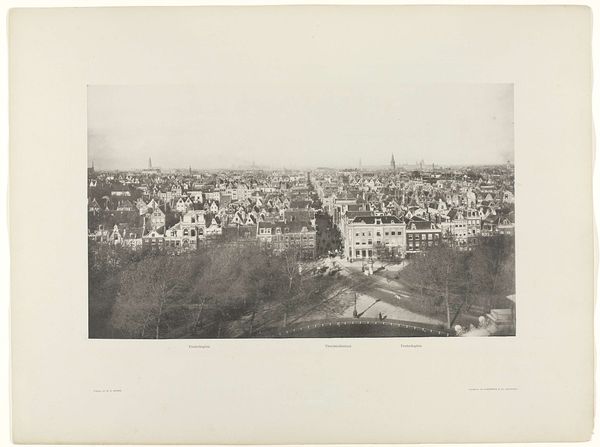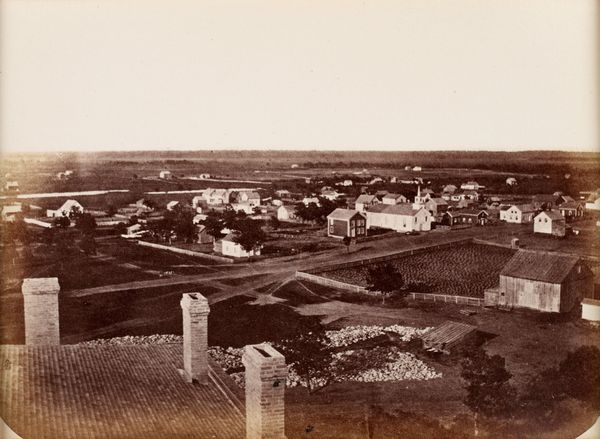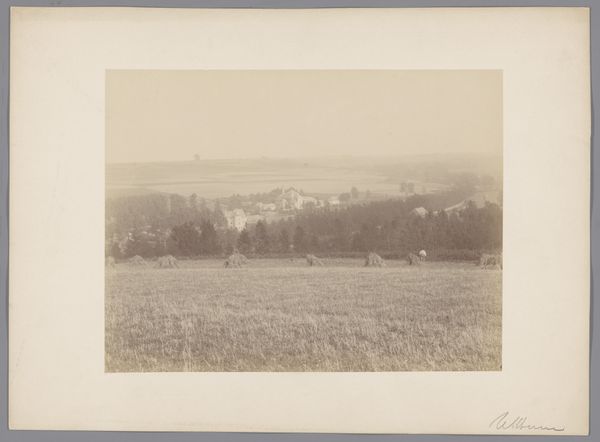
photography, albumen-print
#
african-art
#
landscape
#
photography
#
orientalism
#
cityscape
#
albumen-print
Dimensions: height 219 mm, width 275 mm, height 469 mm, width 558 mm
Copyright: Rijks Museum: Open Domain
Editor: Here we have Félix Bonfils' "Gezicht op Ramla," an albumen print from sometime between 1867 and 1877. Looking at this cityscape, I am immediately drawn to the materiality of the print itself – the sepia tones, the slightly faded quality – it speaks to the historical process of photography. What stands out to you about this particular work? Curator: What interests me most about this image is how its production and distribution were inherently tied to colonial projects. Think about it: the albumen print, the specific choice of viewpoint. What were the economic forces and power structures that enabled Bonfils to travel, to photograph, and then to sell these images back in Europe? Editor: So, you're saying the very act of creating and circulating this image was an act of, in a way, material appropriation? Curator: Exactly! It’s not just about capturing a pretty landscape; it’s about controlling the narrative, producing a specific, and likely skewed, image of the “Orient” for Western consumption. Consider the labor involved, too – where did Bonfils source his materials? Who was involved in the printing process? Editor: That makes me see the image in a completely different light. It’s not just a distant view, it is tied to something bigger... the process. Curator: Right, it urges us to look beyond the picturesque qualities and examine the social and economic conditions that made such an image possible. The materials, the labor, the consumption – these are all inextricably linked. What do you think about that yourself? Editor: I suppose I hadn't considered all the labour in the production, just the artistic decision making. This really opens up a richer and much more ethically complicated view of this image! Curator: Precisely! Looking at art through the lens of materials and production exposes the intricate relationships between art, labor, and the marketplace, prompting critical reflection.
Comments
No comments
Be the first to comment and join the conversation on the ultimate creative platform.
